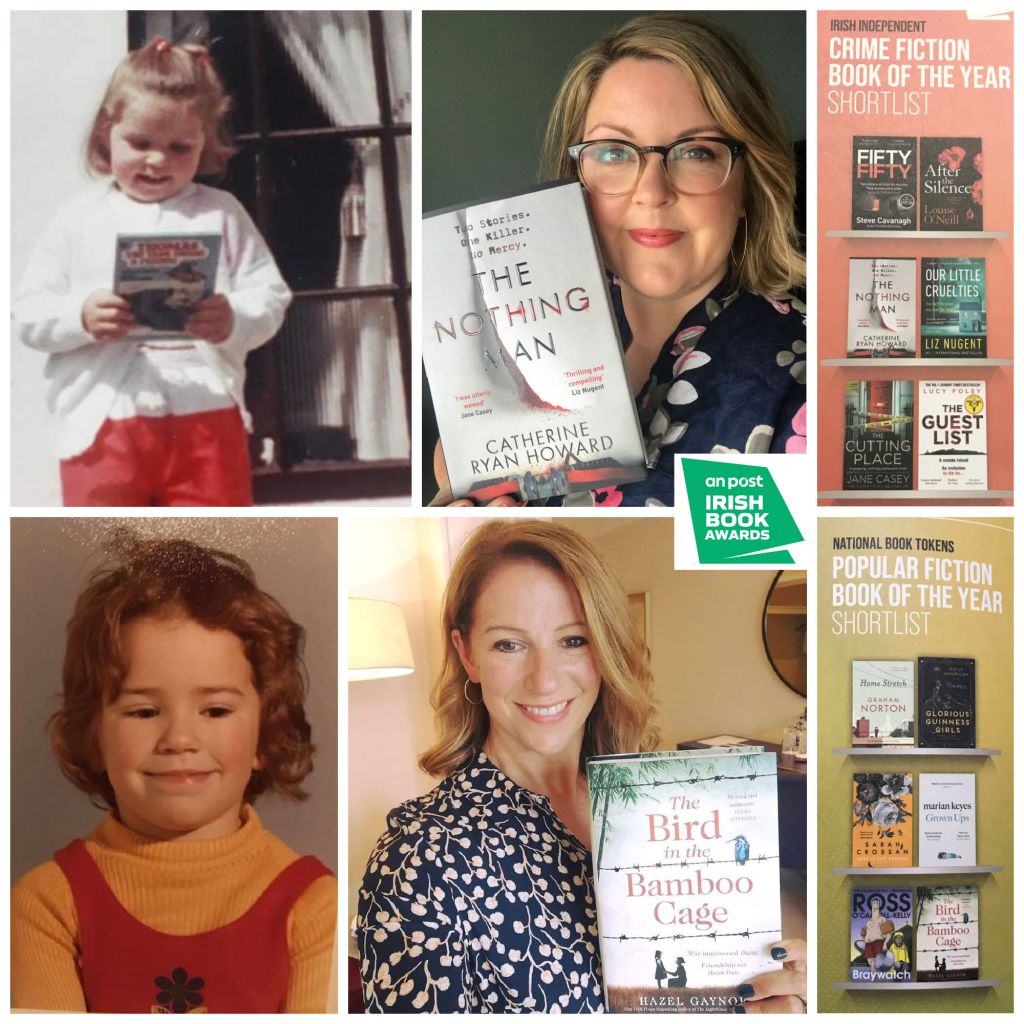Welcome to the Inspiration Diaries! Last year we had six writers - three published, three on their way - checking in each month as a sort of ‘year in the writing life’. (You can catch up here.) This year we’re doing things a little differently. Three new Inspiration Project graduates will give us a monthly insight into their writing lives, but first Catherine, Carmel and Hazel will be taking it in turns to share some of their favourite writing advice in our new series, 5 Steps To…

5 Steps To… Nailing NaNoWriMo
BY CATHERINE
It’s hard to believe we are just days away from November in this weird, elastic year that at times has felt a decade long and at others seemed to pass by in a blink. Here in Ireland we’ve just entered Lockdown 2.0: six weeks at the highest level of restrictions which will take us up to the start of December or thereabouts. In other words… Ideal NaNoWriMo conditions!
If you’re not familiar, NaNoWriMo is short for National Novel Writing Month where the aim of the game is to write 50,000 words of a novel during the month of November, or about 1,666 words a day every day for 30 days. Before I go any further, let’s address the anti-NaNo brigade. Every year about this time, a sub-section of published authors start rolling their eyes and muttering about the reaction to a National Brain Surgeon Month or the like. Their feeling is that writing novels is our job, we take it very seriously, it cannot be done in 30 days and encouraging people to think so not only diminishes our efforts but will lead to a slew of crap landing on agents’ desks right around the first week of December.
I have never understood this attitude and even now, four published books in and writing full-time, I still don’t. NaNo is just a challenge, a way to get people writing, to start their books. We are talking about first draft words. (I’m actually talking about vomit or draft zero words, if I’m honest.) We’re talking about taking a month to start something that, with many, many more months if not years of work after this, might turn into something approaching a finished, polished draft. Numerous published, successful, highly lauded novels started life in NaNoWriMo, including one of my favourite psychological thrillers ever, Into The Darkest Corner by Elizabeth Haynes, and our own Hazel Gaynor’s A Memory of Violets. (Side note: this post was inspired by Elizabeth’s Twitter thread, which you can read here!) As for a slew of NaNo-induced crap landing on agents’ desks December 1st - unless you’re an agent, that’s not your problem. And if you are, I’m sure you have a system in place for filtering out the material that’s going to waste your time, because you get that all the time, right? And finally, it’s called FUN. Have you heard of it?
Here at IP Towers, November 1st has come at an opportune time: Hazel and Carmel are starting new books and I’m prospecting for my next idea. I’ll be writing the second draft of Book 5 throughout November, but since there’s literally nothing else going on over here (!), I’m going to attempt to write 50,000 words worth of something - first draft, outline, messy ideas - of the next book alongside. Consider joining us! Imagine how great it would feel on the other side if you could step into 2021 armed with a pile of raw material ready for reworking instead of just a virtual blank page.
So, here’s my five tips for how you can use the next week to nail NaNoWriMo:
- Go public. Like all things, it’ll be easier to stick to you if you tell people your intentions. (Hence this post!) Sign up to be an official NaNoWriMo-er at their website - it’s free - and tell your friends. Better yet, rope in a few of them. (Um, hence this post.) You might decide that you’re going to tweet your daily progress, or post about it in your Instagram stories. Whatever works best for you - but accountability will go a long way to helping you achieve this goal.
- Prep your life. On Monday, I start the second draft of Book 5. It’s Saturday morning now. Yesterday I scrubbed every square inch of my apartment clean and did my laundry. I sorted out things that have been nagging at the back of my mind: Christmas presents I bought and stuffed in the cupboard; a query I had about a payment that required me to dig through a year’s worth of bank statements; an email I had to send. I’m spending the weekend batch-cooking meals I can freeze and reading proofs that piled up while I was writing the first draft. And I wrote this post! In other words, I’m taking some time to make as much time for writing from Monday onwards. Obviously I’m being helped enormously by a global pandemic and no kids here on their mid-term break BUT adapt it for you. If there’s anything you can do now to make this easier for you after November 1st, get to it.
- Make a plan. What is the best way to achieve this goal of writing 1,666 words a day for 30 days in your life? I know for me that it’s (a) do it first thing in the morning and (b) don’t skip a day - from past experience, I know I can manage writing 1,666 words a day but once I miss one and have 3,332 to do to get back on track, I’m totally scuppered. For you it might be to work late at night twice a week in sprints of 6,000 words. Work it out now so you’re not winging it on November 1st.
- Prep your idea. I personally think that if you’re a plotter as opposed to a pantser (who just writes organically, without a plan in mind), you should take a few days before November 1st to sketch out some idea of what you’re going to write. The first 30,000 words of a first draft are the slowest for me, because I’m spending an inordinate amount of time staring at the screen mulling over names, settings, etc. Try to do that beforehand so you get your 1,666 words logged as soon as you can.
- Take the pressure off. The aim of NaNoWriMo is to write 50,000 words in 30 days, but the point of it is FUN. This is not supposed to be some crushing pressure to add to all the other crushing pressures 2020 has kindly bestowed upon us. Don’t take it too seriously. Revel in the writing, in the creating, in the adventure. And obviously start now with carefully selecting a new notebook for yourself because no writing challenge can begin without one!
Are you planning on doing NaNo this year? Let us know in the comments below!
Breaking news: Hazel and Catherine (yes, I am writing about myself in the third person) have both been shortlisted in this year’s Irish Book Awards! The Bird in the Bamboo Cage is up for Popular Fiction Book of the Year, and The Nothing Man is shortlisted for Crime Novel of the Year. We are absolutely delighted, even if we don’t get to have the best night out of the year this year! (Sob.) The Irish Book Awards are decided in part by a public vote, and if you cast yours you’ll be entered in a draw to win some National Book Tokens. You can vote from anywhere in the world and for all or some of the categories on the Irish Book Awards website (click here) until November 17th.
TANYA
Hard to believe it’s mid October already. Thankfully life has calmed down a bit and I’ve been able to get back into a more consistent writing routine. I’m not going to lie and tell you it was easy to do because it wasn’t. The first few days back at my desk were tough as I struggled to settle my mind and focus on my writing. I’d sit down rearing to go and the next thing I knew I was checking emails and looking at photos on Instagram. We all know how hard it can be to establish a habit but it can be even more difficult to reestablish once broken. So, clearly the best advice is NOT to stray from your daily routine, but that’s easier said than done. Right?
Speaking of habits…Did you know Ludwig van Beethoven followed a strict daily routine? I didn’t until I was running an errand with my brother a few weeks ago. I was telling him about the difficulty I was having and he mentioned an article he had read about daily rituals and he described Beethoven’s. So what was his daily routine? He would rise at dawn, prepare his breakfast, then get right to work. His breakfast was coffee which he prepared himself. In fact, from what I read, he believed sixty beans was the perfect amount per cup and took great care in counting out each bean himself. He would then work at his desk until two or three in the afternoon, taking only an occasional break to walk outside, which aided his creativity. He would then have his midday meal with a glass of wine and afterward, embark on a long, vigorous walk through the woods around Vienna. During his walk he carried pen and paper to capture any ideas which came to mind. I read that after his walk he liked to stop at a tavern and read the papers. And if he wasn’t dining with friends or going to the theatre, his dinner was usually a simple supper, with a glass of wine. He rarely worked on his music in the evening and he retired early.
Turns out there are countless articles and books describing the daily routines of many famous novelists, poets, playwrights, painters, etc., etc. While it’s all very interesting, and believe me, I could definitely spend hours reading about their lives. There is one thing they all know…You must show up and do the work. So whether you prefer to write in the morning or late at night, drink wine with every meal or have donuts for lunch, find out what works best for you and stick with it. We must continue to show up and do the work every day. I’m directing this last sentence to myself!
Now, just a word about the bean counting. I don’t think I’d have a problem following Beethoven’s daily routine but…come on…one cup of coffee in the morning? That just wouldn’t work for me.
LISA
Well this year has felt like it’s been about one hundred years long. Finally we come blundering, lurching, crawling towards the final few months and we are facing into a second wave of the corona virus and another lockdown. The community spirit and the togetherness that we felt back in March, April and May seems to have vanished. Everyone is feeling tired and I’m sure many people are feeling like I am; spectacularly unproductive. I feel like I have achieved very little this year.
However I did over the last six weeks take part in a fantastic creative writing course, run by the brilliant Cat Hogan and this has helped not only to boost my word count but also my confidence. I am finally getting a handle on my current work in progress and starting to see the shape it will eventually become. So even though the weather is turning bad and I can’t go anywhere or do anything. Thanks Covid! I do have this small thing that keeps me hopeful and warm, something that makes me focused on the future but also allows me to escape to the past. That’s the beauty of historical fiction. So here’s to finishing books, staying safe and minding ourselves this Winter.
AMY
Hello Autumn! Come in and don’t bang the door!
How are you all? Well and safe I hope.
It seems that this last month has both flown by and dawdled, and it seems that the only thing marking time is the drop in temperature and the changing leaf colours. Since my last update I’ve been concentrating on novel four as I decided to enter into the Irish Writer’s Centre Novel Fair competition which has meant that my time researching self-publishing has been put on hold until I am happy with this complete manuscript. Fingers crossed it shortlists! That would be great as true to form the rejections have been rolling in – I’m well on my way to gathering that hefty rejection figure so I’m due a little pick me up acceptance from somewhere. Yes, I have reached the stage whereby if my work was accepted by my son to print for his school project I’d be popping the cork on a bottle of bubbly! It’s hard to stay positive but I try to remember that it’s all subjective, and timing is everything. A piece of work may need to be polished a little more, it may need to be sent somewhere else. That is all, and that’s not a bad thing if you can learn from it.
Over the last month I have sat two online writing courses which have helped me immensely with my latest WIP. One was a Psychology of Characters course with Dr Stephanie Carty and the other was from the Irish Writer’s Centre hosting Kit de Waal’s Crafting Characters Course. Both courses were just what I needed at this point in my work. The combination of courses and the exercises they gave really helped round out my characters and have made me answer questions about the project that I was being too lazy to work on – I know, you do it too, we all do! I’ve also read Hamnet by Maggie O’Farrell, and A Ghost in the Throat by Doireann Ní Ghríofa, both of which have inspired me to follow my writing style – or voice.
The result of which is that I have written a huge amount of words and I am trying to not feel the fear but do it anyway!
Stay safe and healthy and get writing!
x
Join us next month and each month for the rest of the year for more writing advice from Catherine, Carmel and Hazel, and to check in with our scribes. In the meantime, we hope you and yours are safe and well.
Find out more about Catherine, Carmel and Hazel here. Sign up to our newsletter to be among the first to hear about our next Inspiration Project event.


Inspirational stuff! I’ve finished the children’s book I was working on, and I’m giving the end of it another! final polish over the next few days. I completed much of the second draft of it last year during NaNoWriMo. It was brilliant to help establish a writing habit and I wrote for 67 days on the trot, taking two days off for Christmas.
To be honest, with all that’s been going on this year, I’d forgotten about NaNoWriMo . So, I have a new shiny idea, and I think I might just go for it.
LikeLike